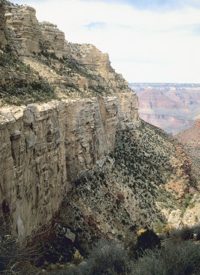
According to USA Today, “In doing so, the administration brushed off pressure from congressional Republicans and mining industry figures who wanted a policy change.”
Hal Quinn, president of the National Mining Association, asserted,
The Secretary’s decision to rule out mining on more than 1 million acres of federal land deprives the United States of energy and minerals critically important to its economy and does so without compelling scientific evidence that is necessary for such a far-reaching measure.
The Arizona-Utah Local Economic Coalition, chaired by state and local officials from both states, noted that federal government studies already conducted to address the principal concern — contamination of the waters of the Colorado River — have shown that mining operations in the area present no environmental problems. Additionally, the Arizona Geological Survey has observed that even if an entire year’s worth of mined uranium were deliberately dumped into the Grand Canyon, the impact would simply be the same as uranium seeping into the Colorado River from natural erosion.
Critics have also noted that 90 percent of the uranium currently used for nuclear submarines and for power generation plants in the country is imported from other nations. The uranium mining near the Grand Canyon could have ended that dependence, they say, reduced our nation’s balance of payments with other nations, created jobs, and also produced substantial federal royalty income (providing revenue for the federal government without raising taxes).
Former Utah State Senator Dave Clark stated that the U.S. Geological Survey has estimated that the area of banned mining holds more than half of America’s uranium — 326 million pounds. Additionally, Robert Weidner, Washington representative of the American Clean Energy Resources Trust, stated that the Interior Department’s mining ban actually violates the law, in that although the Department is required to work with local governments affected by the ban, it actually did not contact local officials until the fact-finding was almost complete and the decision essentially made.
As an example of this failure, John Harja, director of Utah’s Governor’s Public Lands Policy Coordination Office, said that the conclusion of the Interior Department’s study that the ban would cause no negative consequences to the “Arizona Strip” mining area made no sense. On the contrary, local officials estimate that the ban will cost the regions thousands of well-paying jobs.
Unsurprisingly, federal officials argued that the ban is necessary. Bob Abbey, director of the U.S. Bureau of Land Management, a subdivision under Secretary Salazar, insisted,
Uranium remains an important part of our nation’s comprehensive energy resources, but it is appropriate to pause, identify what the predicted level of mining and its impacts on the Grand Canyon would be, and decide what level of risk is acceptable to take with this national treasure.
Environmental groups have applauded the decision as well. Dusty Horwitt, senior counsel for Environmental Working Group, declared, “Secretary Salazar has defended the Southwest’s right to plentiful, clean water and America’s dedication to one of our most precious landscapes.”
The market value of the uranium is about $160 billion and its ups and downs on the market largely mirror other energy sources, such as crude oil. The uranium in the “Arizona Strip” is not only a higher grade than that in most of the world, but it is also significantly less expensive to extract — and thus could be sold profitably around the world.
This mining ban by Secretary Salazar — like the ban on drilling in the Gulf of Mexico after the BP oil spill (even on rigs run by other companies that were perfectly safe) and the constricting regulations on coal mining, which have turned some settlements in West Virginia into virtual ghost towns — reflects the administration’s continuing policy of placing imagined environmental concerns above energy independence and domestic job creation.



